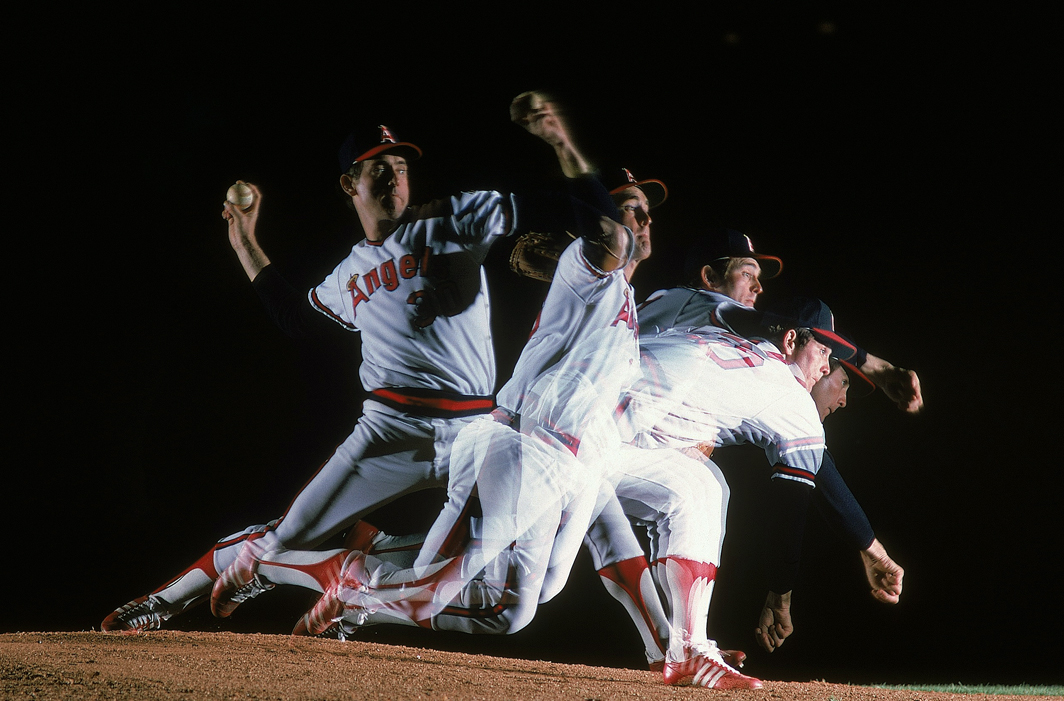INNOVATION
-
 Vida Blue, 1971
Vida Blue, 1971
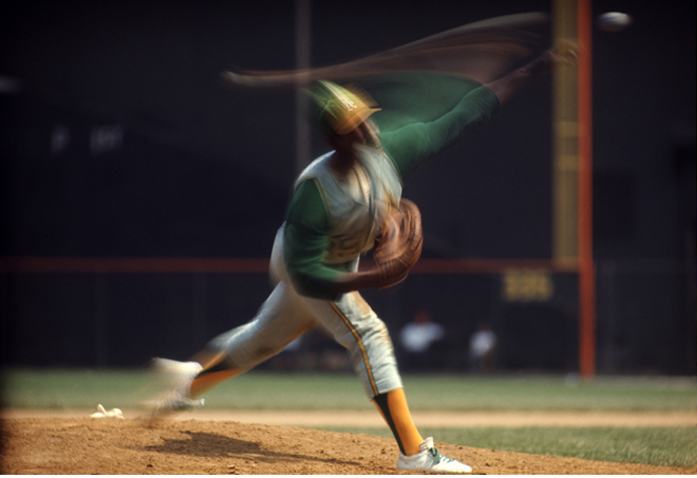
Vida Blue, 1971
Close Close Read MoreThe following excerpt is from Masters of Contemporary Photography Zimmerman & Kauffman Photographing Sports.
When Life Magazine wanted a picture story on Oakland pitcher Vida Blue, who was then having a hot year because of his fierce fastball, Zimmerman got an idea and began tinkering with his 35mm Hulcher again. He removed portions of his circular shutter to allow two separate exposures on a single frame of film. One opening was narrow (1/1500 second) and the other wider (1/15 second). As the shutter revolved, each frame recorded a short exposure and a longer, superimposed one. The picture which was actually made during a game, caught Blue’s rhythm while simultaneously freezing his motion. It captures his flawless form while showing his astonishing speed.
There were two special requirements for the picture. Zimmerman used a neutral density filter on the 1/15 opening to keep its exposure consistent with that of the smaller, 1/15000 second opening, and he went to a ballpark where he could count on a dark background caused by an overhanging roof. The Vida Blue picture has a reportorial quality to it, but Zimmerman often elects to have his technology replace reality with an expressionist statement.
-
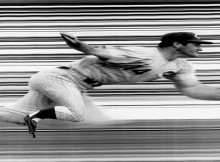 Pete Rose, 1969
Pete Rose, 1969
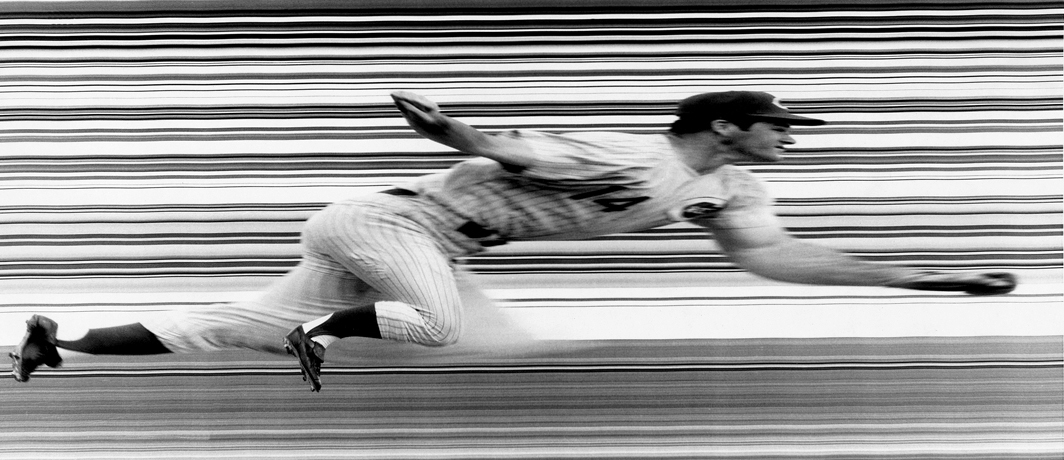
Pete Rose, 1969
Close Close Read MoreThe following excerpt is from Masters of Contemporary Photography Zimmerman & Kauffman Photographing Sports.
Cincinnati outfielder Pete Rose was known for his hustle, a difficult quality to define and an impossible one to hope to photograph during a game. A special shooting would have to be arranged and Rose was happy to cooperate. Zimmerman borrowed a camera developed by Life Photographer George Silk, who had experimented with slit cameras in which the focal-plane shutter is stationary and the film is transported past the opening, instead of the shutter snapping open and closed.
Such devices had long been employed by racetracks for photfinishes. If the subject travels at the same relative speed that the film is transported past the focal-plane opening , the image is recorded normally. Any deviation from these relative speeds either stretches out or compacts the subject’s image. It was not possible for Zimmerman to just train a camera on Pete Rose while he ran. “We had to have him do a kind of exaggerated dance in order to get on film the kind of flow we wanted,” Zimmerman explains. After an afternoon of performing for Zimmerman’s cameras, the dogged outfielder articulated in pictures the hustle that has become his signature.
-
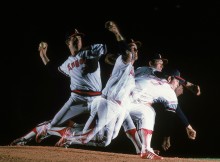 Nolan Ryan, 1973
Nolan Ryan, 1973
-
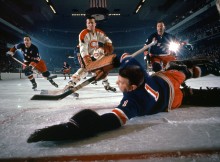 Rangers vs Canadians, 1962
Rangers vs Canadians, 1962
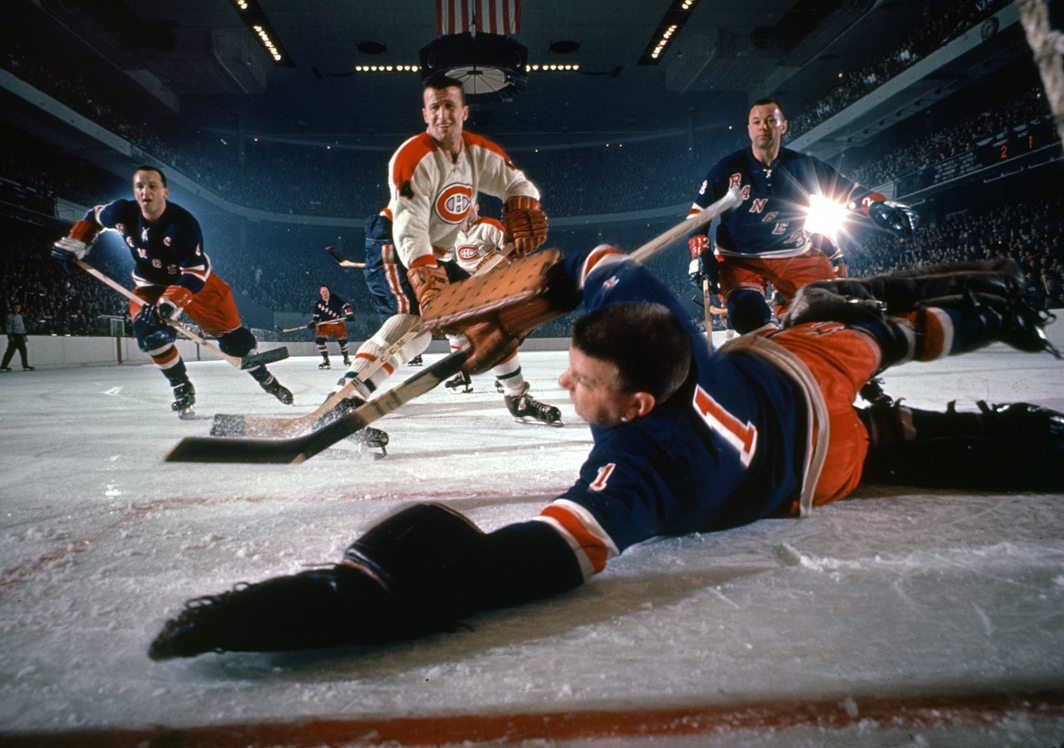
Rangers vs Canadians, 1962
Close Close Read MoreThe following excerpt is from Masters of Contemporary Photography Zimmerman & Kauffman Photographing Sports.
When he was a staff photographer for Sports Illustrated Zimmerman did a story on life in front of the hockey net. The challenge to his technical expertise and creative energies was too much when he got the idea to photograph the epicenter of the game’s most furious action.
Zimmerman wanted to put two of his cameras inside the corners of the goal tender’s cage at the New York Ranger hockey games. There was resistance at first, but he kept badgering the team’s management. The photographer would operate the cameras from the first row behind the net and fire remotely the one with the best view of the action unobscured by the goalie. “Everybody passed the buck on whether or not we could try it. Finally we reached the Rangers’ general manager wo said that he wasn’t able to find anything in the rulebook that said we couldn’t.”
Zimmerman hauled his electronic flash equipment into the Garden and hung four of the Sunlight series of Ascors from the mezzanine rows in each corner of the rink. The Garden ceiling was too high to be of any use as a place to hang lights, so he had to put them low, within camera range. Luckily he was using a wide-angle lens throughout, so any flare would not dominate the picture. The Garden agreed to lay the remote wires under the ice in back of the goal but the whole project nearly aborted when the employee responsible for burying the wire forgot his assignment.
An hour before game time a technician hurriedly chopped a rut in the ice. placed the wire in the trench and then poured water over it. By game time the new ice had formed over the wire lead. During the game, however, Zimmerman noticed to his horror that the ice covering the wire had been shaved away by the skaters. A new York Ranger in hot pursuit of the puck stumbled as he skated over the exposed lead. He turned to seek the cause, but his concern for the game distracted him from finding it. Between periods repairs were made and it was safely burried again. The pictures earned seven pages in Sports Illustrated.
-
 Jenny Chandler, 1980
Jenny Chandler, 1980
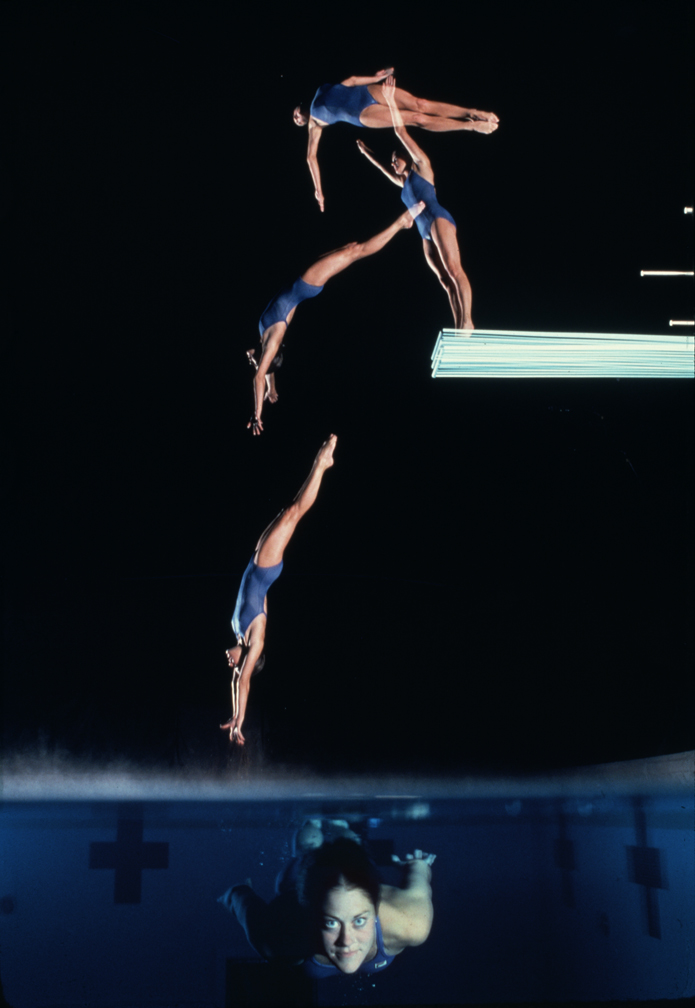
Jenny Chandler, 1980
Close Close Read MoreThe following courtesy of Sports Illustrated Special Anniversary Issue: 50 Years of SI Photography:
Zimmerman got five shots for the price of one by spending a lot of time…and money. He hung drapes around an outdoor pool to create the ideal backdrop for Jenny Chandler as she performed her forward 1 1/2 twist. He kept his shutter open for the entire dive and fired five pairs of strobes sequentially to create the five images of her in this photo. His biggest challenge was getting the underwater shot in focus–for that, he had one strobe above the water and one underwater. He had also spent months modifying a lens at his dining room table to cut down on the refractions that typically distort underwater images.
-
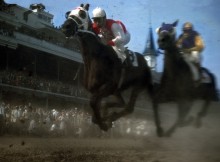 Kentucky Derby, 1960
Kentucky Derby, 1960
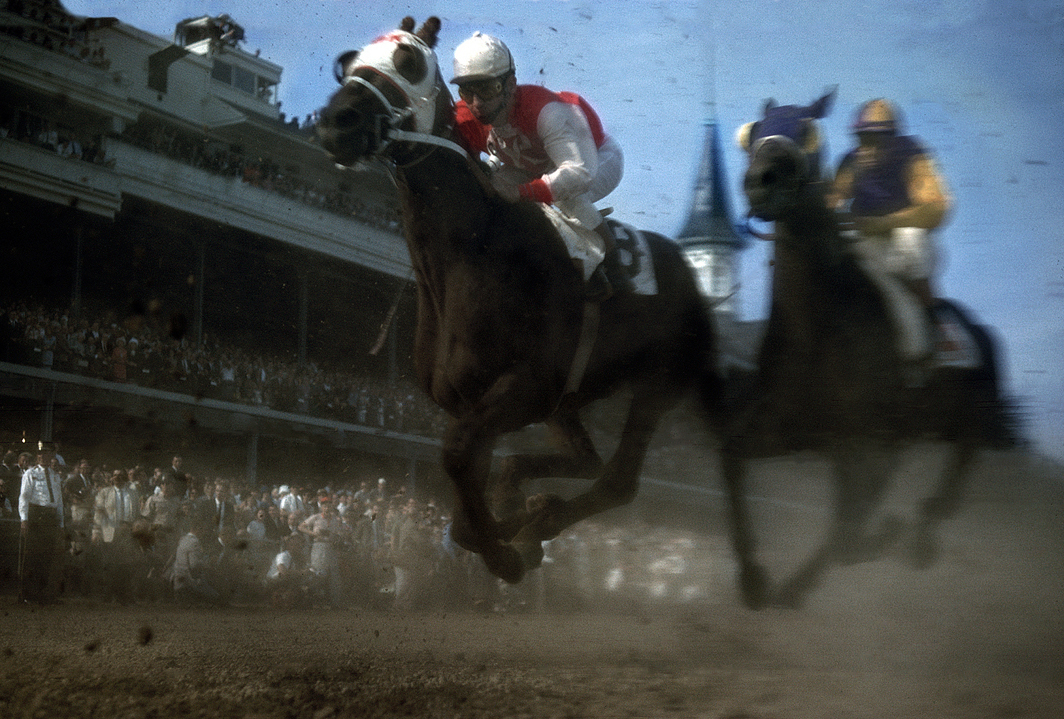
Kentucky Derby, 1960
Close Close Read MoreThis image was taken with the use of remote controlled cameras mounted low in the infield of the racetrack. Zimmerman positioned his cameras on the curve that showed one of the iconic spires of Chruchill Downs. Taken after the lead horses had passed Zimmerman snapped this shot of two horses seemingly flying through the air amidst the dust and dirt kicked upwards in their wake.
This image was recently discovered during a 2010 archiving project on photographer John G. Zimmerman. Due to the mecurial nature of film, the transparancy for this image had degraded substantially while other film transparancies from the same photo shoot remained in mint condition.

